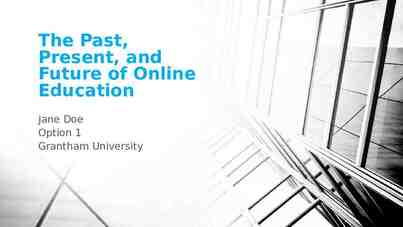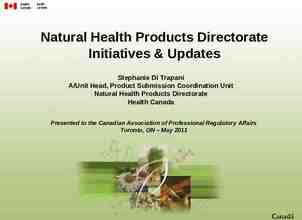Effingham County 2007-2008
30 Slides516.00 KB
Effingham County 2007-2008
Who is a Gifted Student? A student who demonstrates a high degree of intellectual and/or creative ability, exhibits an exceptionally high degree of motivation, and/or excels in specific academic fields, and who needs special instruction and/or special services to achieve at levels commensurate with his or her abilities. Rule 160-4-2-.38
How Many Students? Elementary 260 Middle School 284 High School 256 Total 800 SASI July 2007
Gifted students are not just gifted one or two periods a day! Our goal is to provide a developmentally appropriate curriculum that is consistent with their learning rates and abilities in all subject areas.
Using a variety of gifted delivery models and proper documentation, we can earn funding that enables us to provide quality gifted programs for our students in many different academic settings.
FY 2008 FTE Weights Kindergarten1.6556 ( 4,397) Primary Grades (1-3) 1.2841 ( 3,393) Upper Elem Grades (4-5) 1.0319 ( 2,726) Middle Grades (6-8) 1.1204 ( 2,960) Grades 9-12 1.0000 ( 2,642) Spec.Ed VI (Gifted) 1.6642 ( 4,397)
Gifted Teacher Funding 20 FTE Middle School Students 120 segments 1 Teacher Allotment 12 FTE Gifted Students 72 segments 1 Teacher Allotment
Eligibility Criteria # 1 Ability: 99% for Grades K-2 96% for Grades 3-12 AND Achievement: 90% on Total Battery, Total Reading, or Total Math of a Standardized Test
Eligibility Criteria # 2 Meet the criteria in 3 of the following 4 areas: Ability: 96% Achievement: 90% on Total Battery, Total Reading, or Total Math of Standardized Test Creativity: 90% on a Standardized Test Motivation: K-2 90/100 on Panel Interview 3-12 GPA of 87.5 on Basic Courses
Students identified as gifted and whose participation has received parental consent shall receive at least five segments per week of gifted education services using one of the approved models for delivery. Rule 160-4-2-.38
Academic Areas in which Gifted Services may be provided Mathematics Science Language Arts Social Studies Foreign language Fine arts Vocational/technical education Rule 160-4-2-.38
Gifted Delivery Models Resource Class Advanced Content Class Cluster Grouping Collaborative Teaching Mentorship/Internship Postsecondary Options Rule 160-4-2-.38
Resource Class (K-12) All students are identified as gifted. Maximum class size: 17 - Elementary 21 - Grades 6 – 12 Teacher is gifted endorsed. Curriculum content is academic but, focuses on extension & enrichment activities (thinking skills, problem solving, research, communication skills, and creative productivity).
Advanced Content Class (6-12) Students are homogeneously grouped (May include high achieving students who are not identified as gifted.) Class size is limited to 21. Gifted endorsed teacher or College Board training in AP course content and 10 clock hours of staff development in characteristics of gifted learners and curriculum differentiation for gifted students. Course description clearly shows that the curriculum is differentiated in content, pacing, and expectation of student achievement.
Cluster Grouping(K-12) A group of gifted students (generally 3-8) are placed in a heterogeneous class (mixed ability). Teacher is gifted endorsed. Individual student contracts and separate lesson plans are required.
Collaborative Teaching(K-12) Heterogeneous class (mixed ability) Teacher is not gifted endorsed. The gifted endorsed teacher and general education teacher meet together to collaborate and develop challenging assignments that replace or extend the curriculum. Collaborative planning is documented in a time log. Individual student contracts and separate lesson plans are required.
Mentorship(9-12) The gifted student works with a mentor to explore a profession of interest. Mentorship is supervised by gifted endorsed teacher. Student Contract is required.
Contracts Written agreements between teachers and students that outline what students will learn, how they will learn it, in what amount of time, and how they will be evaluated.
Contracts are not needed for: Resource Classes or Advanced Content Classes. *The entire curriculum is challenging and differentiated to the degree that it is clearly not appropriate for the more typical students at that grade level. Contracts are required for: Cluster Classes Collaboration Classes Mentorships
What must a contract include? 1. Reason(s) why the particular student needs advanced curriculum in the particular content area. 2. Learning objectives for the student. 3. Alternative activities in which the gifted student will be engaged. 4. Dates and amount of time( in segments) the student will be engaged in the higher-level activities. 5. Means by which the gifted student’s learning will be assessed.
Evidence of Need for Advanced Curriculum Pretest Class Performance (based on teacher observation & grades) Student interest GPA Standardized test score
General Area of Study Language Arts Science Social Studies Math Personal and Social Development Other (specify)
Specific Area of Study: Write a brief overall description of the assignment or contract work. Student will understand how different economic systems operate in the exchange, production, distribution and consumption of goods and services.
Learning Objectives GPS QCC
Differentiated or Alternate Activities in which the student will be engaged. List a variety of alternative or extension activities from which the student may choose. Activities should be connected to the learning objectives. Differentiated activities should be documented in the lesson plans. Students work on the extended activities during the time the class is working with the regular content.
Assessment Procedures: Rubrics Pretests Student Portfolio Post assessments Student should probably earn the same credit as if they had completed the regular tasks as long as they adhere to the agreed upon conditions in the contract.
Suggestions Prepare a study guide that includes the same concepts all students will be responsible for mastering. Include dates when students must meet with the rest of the class to demonstrate their competence with the required concepts.
Records and Retention Keep copies of contracts and lesson plans for Four Years
Make-Up Work The majority of gifted elementary students receive services through a resource model, in which they are pulled from their regular class. It should not be necessary for GT students to complete all assignments missed while attending GT.
Please use the following suggestions to insure GT students understand essential content while not requiring assignments that cover material which has already been mastered by the students. The Suggestions Please do not send work with students to complete while they are in the GT resource class. Use pretests and alternate assessments to determine the gifted student’s mastery of concepts presented while they are away. If a new concept is introduced that the student has not mastered, provide differentiated assignments to enable the student to practice and learn the information. Other class assignments can often be compacted to allow gifted students time to complete the differentiated assignments. Students should never be required to miss recess, music or other special activities in order to make up work missed while attending gifted class. Gifted students may be given different homework assignments, but should not be given additional homework because they attended gifted classes.



































